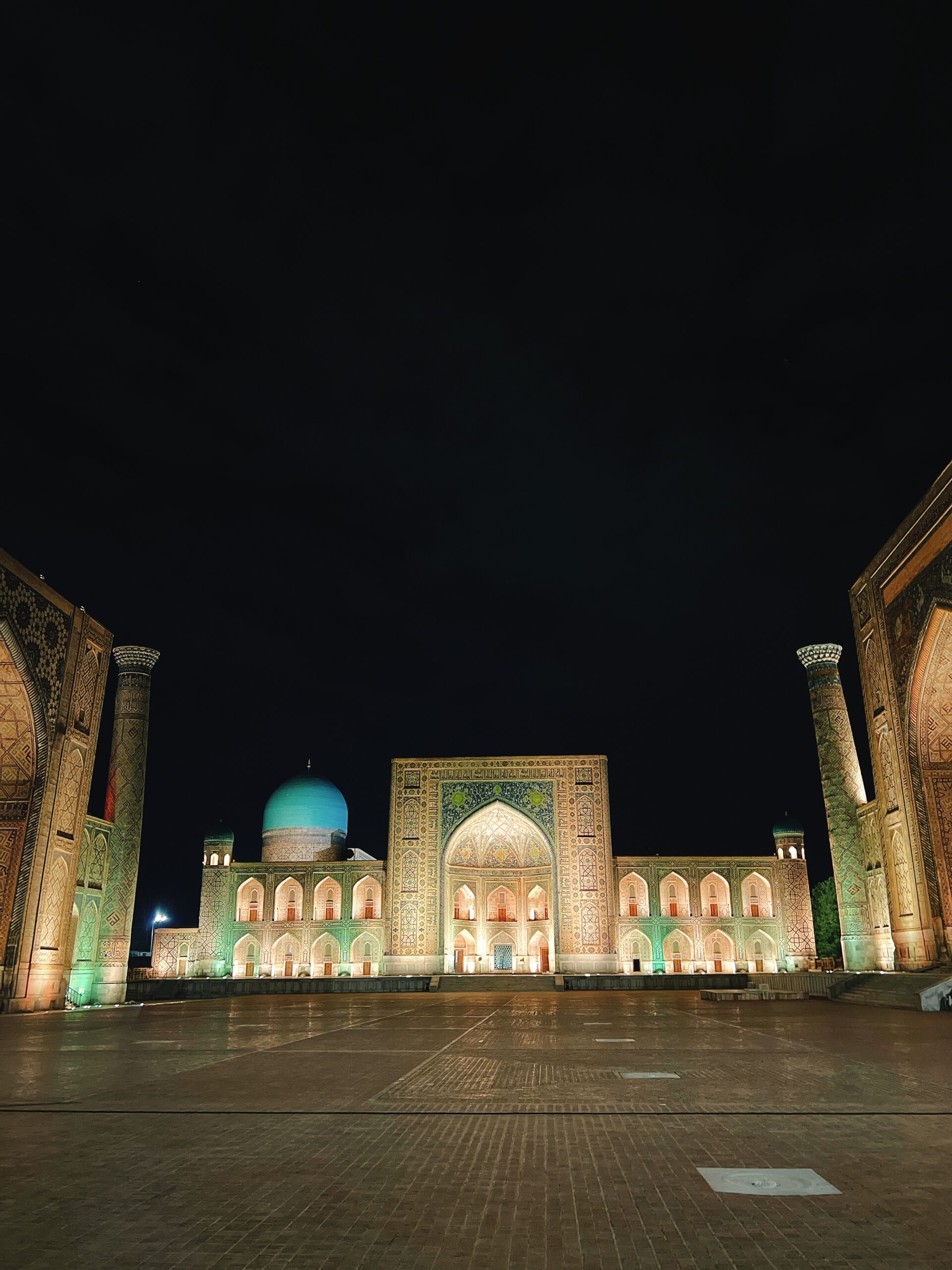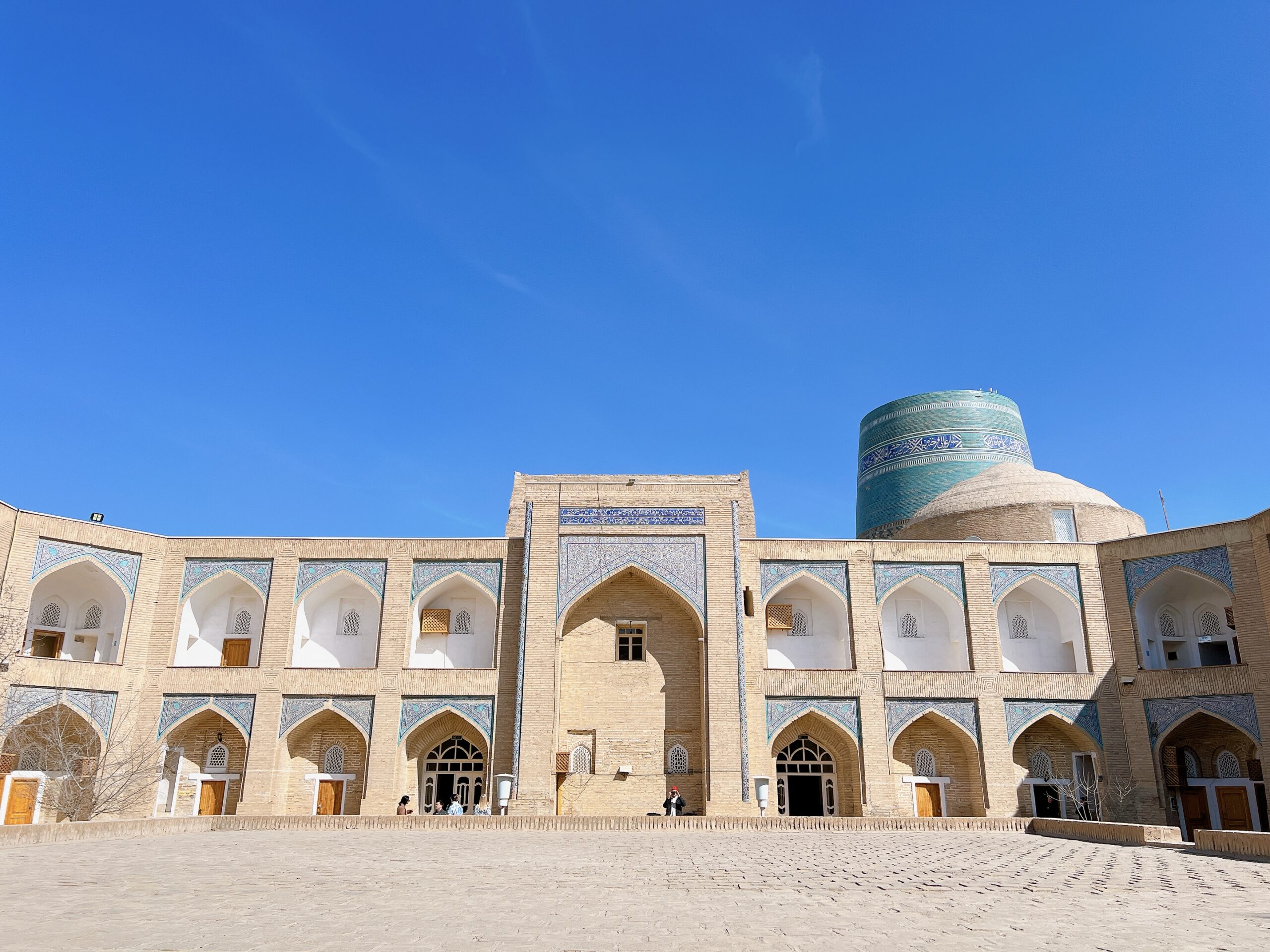
Nestled within the golden sands of the Uzbek desert, Khiva emerges as a true gem of Central Asia, preserving its ancient charm amidst the modern world. This walled city, with its labyrinthine streets and stunning architecture, transports visitors back in time to an era of Silk Road caravans, fierce khans, and bustling bazaars.
Once a pivotal stop along the legendary Silk Road, Khiva’s history dates back over two millennia. Its strategic location made it a thriving center of trade and culture, attracting merchants, scholars, and conquerors alike. The city flourished under the rule of the Khorezmshah dynasty and later became the capital of the powerful Khanate of Khiva.
Today, Khiva stands as a living museum of Uzbekistan’s rich cultural heritage. Its well-preserved medieval architecture, characterized by intricate tilework, towering minarets, and ornate madrasas, reflects the city’s illustrious past. Each corner of Khiva whispers tales of conquests, trade, and intellectual pursuits, inviting visitors to delve into its storied history. Here are some of the must-see attractions in Khiva. Spending 1-2 full days in Khiva is sufficient.
Ichon-Qala (Inner Town)

This is the historic core of Khiva, surrounded by impressive walls. Within Ichon-Qala, you’ll find numerous architectural gems, including mosques, madrasas, minarets, and palaces.
Strolling around the Inner Town, we also witnessed a wedding couple going around to take their photoshoot. It was full of life on a Sunday, filled with stallholders, international and domestic tourists, and students on a school trip.


Kunya-Ark Citadel

This ancient fortress served as a residence for Khivan khans. It offers panoramic views of the city and is adorned with beautiful mosaic tiles.
Islam Khodja Minaret and Madrasa

This towering minaret, standing at over 45 meters, is one of Khiva’s most recognizable landmarks. The adjacent madrasa features intricate tilework and a small museum. It’s possible to climb this 57m tall minaret, Uzbekistan’s highest, for fine views over the old city. Morning light offers the best views.
Fee: 100,000 som (= $10 ) It is an additional ticket, on top of the fee to enter the Ichan Qala. I felt that it was not worth it to climb this minaret and did not pay for the separate entrance. You can also get a view of rooftops by walking the far, far less crowded city walls.
City Walls

One highlight for which no ticket is needed is the walk along the northwestern section of the Ichon-Qala wall. The stairs can be accessed at the North Gate and are a great place to be at sunset. The 2.5km-long mud walls date from the 18th century, and were rebuilt after being destroyed by the Persians.

Juma Mosque
Known for its forest of wooden columns, each intricately carved with unique designs, this mosque is a marvel of Islamic architecture. Constructed in the early Middle Ages but rebuilt in the late 18th century, the modest, one-room mosque has openings on all 4 sides and is supported by over 200 wooden pillars which fill the prayer hall.

Tash Hauli Palace

This former royal residence showcases Khivan architecture and design, with colorful tilework and intricate woodcarvings. This palace, which means ‘Stone House’, contains Khiva’s most sumptuous interior decoration, dense with blue ceramic tiles, carved wooden pillars and elaborate ghanch.



Built by Allakuli Khan between 1832 and 1841 as a more splendid alternative to the Kuhna Ark, it’s said to have more than 150 rooms off nine courtyards, with high ceilings designed to catch the slightest desert breeze. Allakuli was a man in a hurry – the Tosh-Hovli’s first architect was executed for failing to complete the job in two years.


Pahlavon Mahmud Mausoleum

This complex includes the tomb of the revered poet and philosopher Pahlavon Mahmud, as well as a mosque and a courtyard adorned with beautiful tilework.


The beautiful Persian-style chamber under the turquoise dome at the northern end of the courtyard holds the tomb of Mohammed Rakhim Khan. Pahlavon Mahmud’s tomb, to the left off the first chamber, has some of Khiva’s loveliest tiling on the sarcophagus and the walls. Tombs of other khans stand unmarked east and west of the main building, outside the courtyard.
Getting to Khiva
You can take an overnight train from Tashkent to Khiva (15 hours), or if you are traveling east to west, then a train from Bukhara to Khiva (7 hours). There is no high speed train linking to Khiva as of now. For us, in the interest of time, we took a domestic flight from Tashkent to Urgench, the airport nearest to Khiva.
The distance between Urgench Airport and Khiva is approximately 35 kilometres and the driving time is about 45 minutes. From there you can arrange for a a shared taxi to your guesthouse or hotel. Taxis are readily available outside the airport. You can negotiate a fare with the driver to take you directly to Khiva. Make sure to agree on the price beforehand. For us, we booked through our guesthouse to avoid the hassle, so our driver was already waiting outside the airport for us. It is a small airport terminal with only one luggage conveyor belt.


